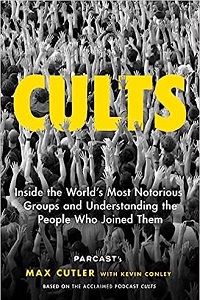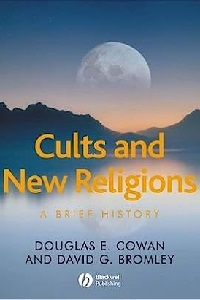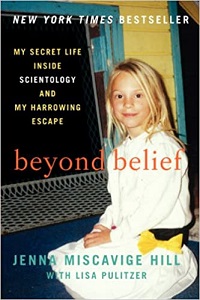How will these resources help you?
In an increasingly secular Britain, it is important that our students are aware of the positive social impact religion plays within our society. Many students mistakenly believe that all faith is ‘blind faith’, and at times fail to appreciate the distinctions between religions and cults. Once a religion is established, the beliefs and teachings are widely available to all rather than a select, chosen few. However, in the early stages, it can be difficult to differentiate between a new, emerging religious movement and a cult. These resources aim to help to create a clearer picture of what a ‘cult’ is and to provide interesting case studies that can be used in a classroom.
A variety of cults and what draws humans towards them

Cults: Inside the World's Most Notorious Groups and Understanding the People Who Joined Them
by Max Cutler with Kevin Conley, published by Gallery Books, (2023), 9781982133559
This book is based on a popular podcast in which cults are examined and parallels between them are drawn. It is essentially an encyclopaedia of cults, from the well known (Heaven’s Gate, the Manson 'Family') to others that have not received the same amount of media attention. Personality traits are identified in each cult leader to suggest why they form these groups and how vulnerable people are drawn in. The book is useful to gain an insight into the key characteristics of cults and for teachers to choose suitable case studies. It is also useful as part of a curriculum with a focus on religion and worldviews as it studies the founders of cults as people with a unique, particular life experience, and shows why they are drawn to these positions of power. (If using the book directly with students, be mindful that some sections do contain dark and grisly details.)
Setting parameters for what is a ‘cult’ and what is ‘religion’

Cults and New Religions: A Brief History
by Douglas E. Cowan and David G. Bromley, published by Wiley-Blackwell, (2007), 9781405161282
An interesting perspective that offers somewhat of a defence of new religions, some of which are popularly referred to as ‘cults’. The point is made that many of the established religions today were previously seen to be ‘cultish’ (charismatic leader, small groups of devoted followers). The authors offer a way to distinguish clearly between the two. Each case study has a similar format in which the history, key figures and controversies are explored. Eight examples are examined, including Scientology, The Family International, and Wicca. The relationship between media portrayal and new religious movements is looked at in depth, which allows the reader to carefully consider what constitutes an authentic religion.
An insider’s perspective

Beyond Belief: My Secret Life Inside Scientology and My Harrowing Escape
by Jenna Miscavige Hill with Lisa Pulitzer, published by William Morrow, (2013), 9780062248480
Jenna Miscavige Hill is the niece of the current leader of the Church of Scientology. Her book details her life as a child growing up within Scientology, through to her eventual escape and breaking of her family ties. This accessible book breaks down Scientology jargon into clear, digestible concepts that help the reader to understand how people are drawn to it and why they don’t simply leave at the first sign of corruption or abuse. Towards the end of the book, the author makes explicit reference to this fact and provides useful insights into how intelligent people are drawn into the movement (signing 'billion year' contracts, while at the same time being told to 'think for yourself').
Further materials
41 countries ban religion-related groups; Jehovah’s Witnesses, Baha’is among the most commonly targeted by Samirah Majumdar, published by Pew Research Center, (2021)
Read this article
Is it a cult, or a new religious movement? by Tina Rodia, published by Penn Today, University of Pennsylvania, (2019)
Read this article
Why do people join cults? by Janja Lalich, published by TED-Ed, (2017)
Watch this video
Religion’s Relationship to Happiness: Civic Engagement and Health Around the World, published by Pew Research Center, (2019)
Read this article
Lucy Kentish is Head of Religious Studies and a South Coast Adviser for a MAT. She is part of a national leadership scheme for RE, has developed curriculums and resources for various schools and also works as an examiner for Eduqas.
Text © Lucy Kentish, 2023.
Text © Lucy Kentish, 2023.



